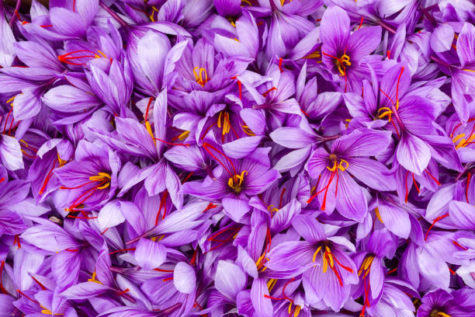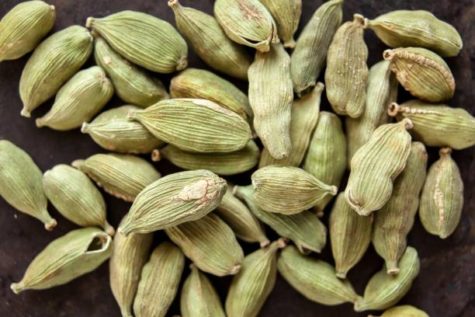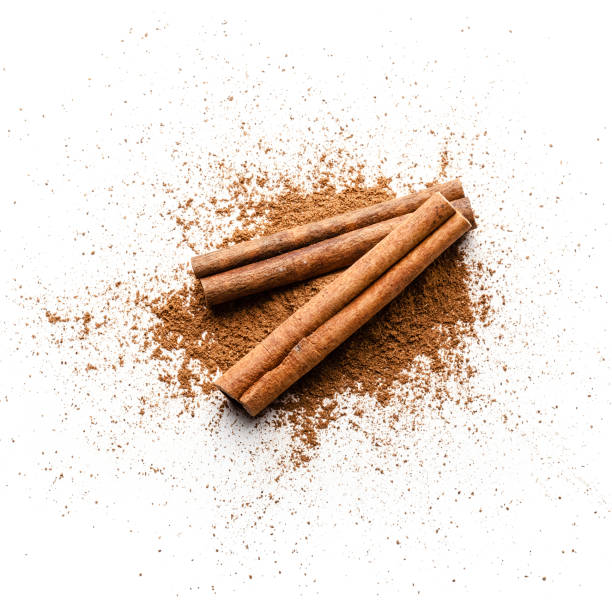The Spice Wars
The cost of labor for some spices, along with their scarcity, do add up for the consumer.
Cinnamon is a spice, often sprinkled on toast and lattes, that must be extracted from the bark of the tree.
A walk through any grocery store will find you passing through an aisle filled with spices and many brands. While some spices like pepper and oregano will have an abundant stock and many brands, this can not be said for spices such as saffron, vanilla, green cardamom, and cinnamon. Rather, these spices will be in low stock and accompanied by a steep price tag. But what even are spices?
The word “spice” derives from the Latin ‘species,’ or ‘special wares,’ and refers to an item of special value, as opposed to ordinary articles of trade. Sought-after spices could once only be grown in the tropical East, the South of China, Indonesia, and Southern India and Sri Lanka. European nations such as Great Britain and Spain sought the spices that were grown in these faraway lands. Spices from Asia could be used to flavor meats, preserve food, and make perfumes and medicines. As more countries and explorers searched for routes to these spice-filled lands, they made discoveries such as the Americas that led to future explorations. Spices were the reason behind the European Age of Exploration that helped shape a more modern world.
Valuable spices, including pepper, ginger, cloves, nutmeg, mace, cinnamon, saffron, anise, zedoary, cumin, and cloves, were used in the preparation of food across Europe, the Americas, Australia and Asia. Although most of these were reserved for the tables of the rich, even the poorer classes used spices such as pepper whenever they could get them. Spices, despite their cost, were used in great quantities. The taste for these spices continue today, along with the price tags associated with them. There are some spices where its price tag is rather steep than others, which include saffron, green cardamom, cinnamon and vanilla.
Saffron:
Saffron is the most expensive spice in the world. Saffron (Crocus sativus) is a plant, but not all of the flowers yield the spice. Although saffron is a spice cultivated primarily in modern-day Iran and Spain, it is used in dishes all over the world. Saffron is beloved for its floral, sweet, pungent, metallic, earthy, and grassy taste. Saffron is also the most expensive spice in the world. It is typically the signature ingredient of food dishes from Spanish paella to Persian tahchin to Kashmiri rice.
Saffron comes from the crocus flower, of which there are at least 75 varieties. This can make it tricky to identify if one is looking at a plant that will actually yield saffron. If you live in a cold climate, there are easily found petite pink, purple, and white crocus blossoms popping up through the last remnants of snow, but only one type of this plant will yield saffron and that is the flower that blooms in the autumn known as the autumn saffron crocus.

(Kikagogo / iStockphoto)
The dried thread-like parts of the flower (stigmas) are used to make saffron spice, food coloring, and medicine. The Saffron crocus is a member of the Iridaceae family. This plant was originally native to Asia Minor and the Mediterranean and is cultivated mainly in southern France, Iran, Spain, Italy, Morocco and Greece today.
Saffron’s high prices can be explained by their expensive harvesting costs. The saffron crocus blooms once a year for two weeks. Each flower has three pistils, and they must be harvested by hand the morning after the flower blooms. Otherwise, the precious flavor evaporates.
For one kilogram of saffron, one needs at least 150,000 flowers or an acreage of approximately 1,000 square meters. The cost of labor is one of the reasons behind the steep price. Saffron farmers must race against time and develop skill to be able to accurately use all of the blooms.
Vanilla:
Vanilla is a plant that is of high demand in the baking world, most commonly seen in kitchens in the form of extract. Vanilla comes from the vanilla orchid, a bright green, vine-covered plant with elegant, cream colored blooms. Vanilla extract is a hyper-concentrated liquid made from vanilla beans which are steeped in alcohol and water. Due to the fact that the liquid is made from alcohol, the flavors will continue to be extracted over time, deepening the flavors.
According to the FDA, pure vanilla extract needs to contain 35% alcohol. But everyone who uses this bottle of vanilla extract knows that they had to pay a hefty sum to put even the drop of vanilla extract that was needed in the recipe into the mixture.
The price can be attributed to the conditions that vanilla will grow under and the high demand for it. Vanilla will only grow in warm, humid climates at temperatures between 21 and 32°C.. Vanilla also requires a soil rich in calcium and potassium and will grow best in a soil which is light and well-draining.
Much of the world’s supply of vanilla beans (about 80 percent) is grown in one place, on the island of Madagascar. But due to devastating storms, the pressures of deforestation, and intensive labor, it is very difficult to meet the high demand of such a desirable product.
In the past two decades, the cost of vanilla beans has increased by more than $300 per pound, and the price of the extract itself has doubled. New vanilla orchids take about four years to grow flowers and become usable, which means that the prices aren’t bound to change any time soon due to a sudden increase in supply.
These high prices has led to the existence of imitation vanilla. Imitation vanilla is made from vanillin. Vanillin is manufactured from a substance called guaiacol. The vanillin is diluted with a liquid, typically alcohol or propylene glycol to create the imitation vanilla. In order to meet the demand of recipes that call for vanilla extra, imitation vanilla can be used by consumers.
For some households, imitation vanilla isn’t the route they choose. Rather households such as that of Orli Strickman ’23 resort to optimizing every vanilla pod. Strickman said, “With my family, when we don’t want to buy vanilla, we take the pods and refill a bottle with water or alcohol, so that always have some on hand.”

Green Cardamom:
Cardamom is a plant that is related to the ginger family. It has a fiery-spicy flavor. The flavor is a cross between eucalyptus, mint and pepper. Its main areas of cultivation are in India and Madagascar.
There are two types of cardamom, black and green. Black cardamom has a smoky, earthy and tart flavor and is used mainly to flavor savory dishes. Green cardamom is often used in desserts. Green cardamom is useful in treating sleep troubles. Its pods also boost digestion and fight gastric troubles.

The green cardamom comes from the species Elettaria cardamomum, while the black cardamom belongs to the species Amomum subulatum. The main difference between these two cardamom varieties is the way they are processed. When it comes to green cardamom, the pods are harvested before maturity. The pods of black cardamom are harvested much later and are also dried over large fires. The earlier harvest that deals with fragile pods is the reason behind the higher price tag on green cardamoms as opposed to black cardamoms.
The main reason this spice is so expensive is because it needs to be harvested by hand. It is a very labor-intensive hand picking process. Each cardamom pod must be picked when it is about ¾ ripe so time and care are needed to yield this spice.
Cardamom is also a highly sensitive plant, which requires good observation and care. It is very prone to insects and fungal attacks which makes the cost of maintenance very high. Not to mention, an acre of cardamom will generally produce only around 50 – 150 pounds of cardamom spice. Scarcity combined with labor prices results in expensive green cardamom pods.
Cinnamon:
The cinnamon spice is made up of the dried bark of cinnamon trees. It is one of the oldest spices in the world and is used mainly to flavor desserts. The Cinnamomum verum plant is native to Sri Lanka, although it is now cultivated in many tropical countries. Between the 16th and 18th centuries, cinnamon was particularly valuable and was one of the most expensive spices in the world. In 1530, the merchant Anton Fugger burned the IOUs of Charles V, the Emperor of the Holy Roman Empire, in a fire made of cinnamon sticks, in order to demonstrate his enormous wealth.
The tedious process of producing cinnamon is the reason behind its price. Farmers must wait four years after a tree is planted before they can begin harvesting. At harvest, workers break down the branches when the bark is still moist. Then they must go about stripping the inner bark of each branch by hand. To produce the most valuable cinnamon, the bark must be made extremely thin. The thinner the quills are, the more costly they will be. After drying, the small pieces are stuffed inside a straight piece of bark. Workers only produced about 3 pounds of quills a day. The small yield and extensive labor makes the price of cinnamon evident at the grocery store for being so high.
The world’s most expensive spices can all be attributed to the labor needed to produce these spices at the demand that they hold in today’s market. The lack of dependency on machinery forces producers to place high price tags on each of these spices. The processes are tedious, and long and the reward received by farmers isn’t much. The joy that these spices provided us through dishes and medicine is something we owe to the farmers that dedicate hours in fields every day.
The world’s most expensive spices can all be attributed to the labor needed to produce these spices at the demand that they hold in today’s market.
Niha Roy is a Managing/Advisory Editor and a Staff Reporter for ‘The Science Survey.' She enjoys writing articles about issues and groups of people whom...

